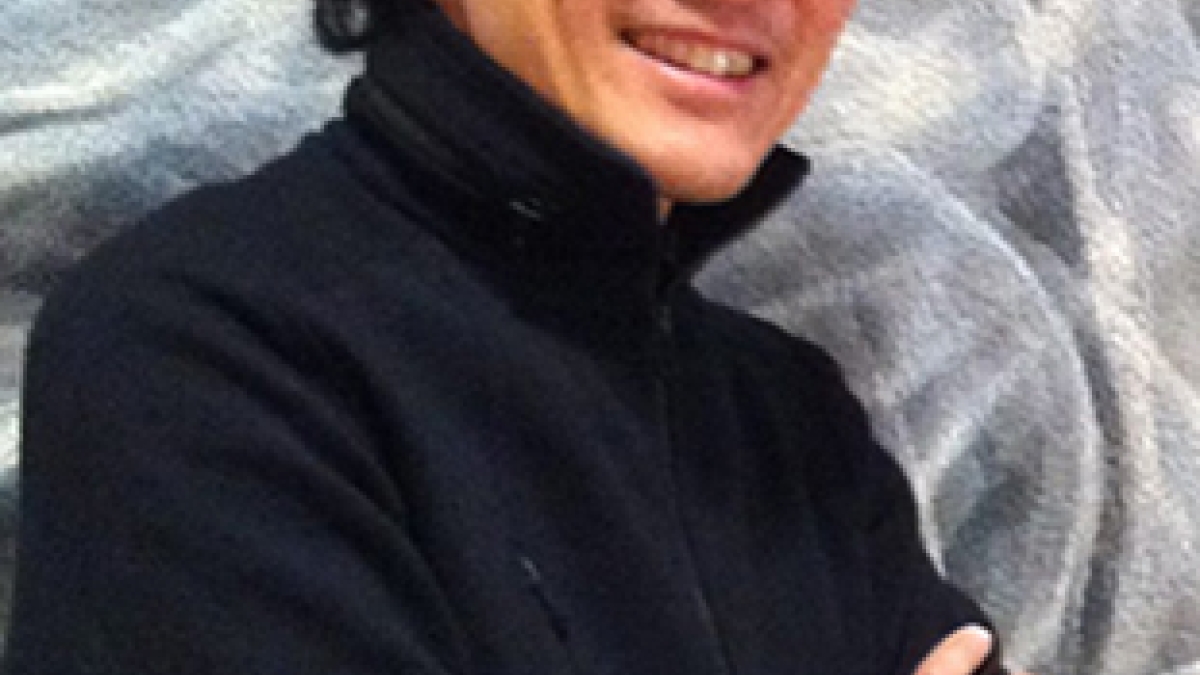Sha Xin Wei named director of School of Arts, Media + Engineering

The ASU Herberger Institute for Design and the Arts welcomes media arts, science and technology scholar Sha Xin Wei as the new director of its School of Arts, Media + Engineering. Sha took the helm Jan. 1, and will be speaking at the Digital Culture Center at ASU from 3-4 p.m., Feb. 6.
“Sha Xin Wei will bring an extraordinary breadth of interest and enthusiasm together with an impressive depth of intellectual rigor to the School of Arts, Media + Engineering,” said Michael Underhill, interim dean of the Herberger Institute for Design and the Arts. “Sha’s work has engaged faculty and students at Concordia, and he has shown his ability to inspire creative thinking and lead teams to productive output. He exemplifies the importance of working at the intersection of art and science."
With a doctorate in mathematics from Stanford and membership in an artists’ collective that pioneered experimental interactive environments in the late 1990s, Sha has been working at that intersection for decades. He envisions the school as a place that will foster “a radical mode of experimental, transdisciplinary practice.”
“The School of Arts, Media + Engineering is uniquely situated to be a place where we invent and learn new forms of language for the 21st century, thanks to its amalgam of the most adventurous and committed practitioners from different disciplines – computer science, dance, music, sound arts, electrical engineering, interaction design, interactive media and installation art, philosophy, science and technology studies – all housed under one school, and powered by ASU's significant institutional energy," Sha said.
The goal, according to Sha, is “computational media literacy for every single graduate of the New American University.” Sha’s planned affiliation with the Department of English as well as the Ira A. Fulton Schools of Engineering reflect his personal and institutional commitment to forging resilient hybrids from the humanities, as well as the arts and engineering.
In 2001, Sha founded the Topological Media Lab at Georgia Tech's Graphics, Visualization, and Usability Center. The Topological Media Lab approaches media arts and technologies research as a creative endeavor that cuts across disciplines and fields of experience. Sha described it as “a fresh and unique atelier for art-based research about how to make the places in which we live richer but not more complicated,” and said that the lab “combines the best practices of the theatrical production group, creative engineering lab and the pre-industrial atelier.”
In 2005, as Canada Research Chair in New Media, Sha brought the Topological Media Lab (TML) to Montréal, where he also served as associate professor of fine arts and computer science at Concordia University. Since its founding, the TML has hosted more than 120 artists, scholars, inventors and philosophers from all over the world.
“I expect to bring some key elements of the Topological Media Lab's research projects and mentoring practices to the ‘Synthesis Center’ that I'd like to build at ASU with the School of Arts, Media + Engineering,” Sha said. The Synthesis Center will be a home for transdisciplinary creative work drawing together the humanities, as well as arts and sciences to create new kinds of responsive environments and improvisation in all senses.
Sha’s theoretical work explores gesture, distributed agency and materiality in kinetic and body-based media and in responsive environments. His artistic work includes the TGarden responsive environments (Ars Electronica, DEAF, MediaTerra Athens, SIGGRAPH); Hubbub speech-sensitive urban surfaces; Softwear gestural sound instruments; WYSIWYG gesture-sensitive sounding weaving (ICMC, Copenhagen); Ouija movement studies; Cosmicomics video installation (Elektra Montreal); eSea reactive wall (eArts Shanghai); and IL Y A video membrane (Rotterdam, San Francisco, Berkeley, Montreal).
His recent publications include a monograph, “Poiesis and Enchantment in Topological Matter” (MIT Press 2013), and a special edited volume of AI & Society (2011), titled “Poetic and Speculative Architectures in Public Space.” Other creative activity includes six book chapters, 29 refereed publications, 22 peer-reviewed presentations, 17 solo and 19 group exhibitions, 28 workshops and chaired panels, and over 55 invited lectures. Sha sits on the editorial boards of AI & Society, the Experimental Practices book series at Rodopi Press, FibreCulture and International Journal of Creative Interfaces and Computer Graphics, and is the founding editor of Transmutations, a journal for critical studies of performance, media and technology.
Sha graduated from Harvard University, where he earned an artium baccalaureatus in mathematics (cum laude). He then headed west to Stanford University, where he completed both his master's and doctorate in mathematics. Prior to joining the faculty at Concordia, he taught at Georgia Tech as a member of the Center for New Media in the School of Literature, Media and Communication and in the College of Computing. Sha also served as the Mellon Fellow at the Gray Center for Arts and Inquiry at the University of Chicago, and as a visiting scholar in the Department of French and Italian at Stanford University, the History of Science Department at Harvard University and the Program in Science, Technology, and Society at the Massachusetts Institute of Technology. In addition, he worked as a researcher for Interval Research Corporation and for Stanford University, and co-founded Pliant Research with colleagues in Xerox PARC and Apple Research.
The School of Arts, Media + Engineering specializes in transdisciplinary research and development of hybrid physical-digital media systems with applications in health, education, communications and creative practice. It is one of five schools that, together with the ASU Art Museum, comprise the ASU Herberger Institute for Design and the Arts.

